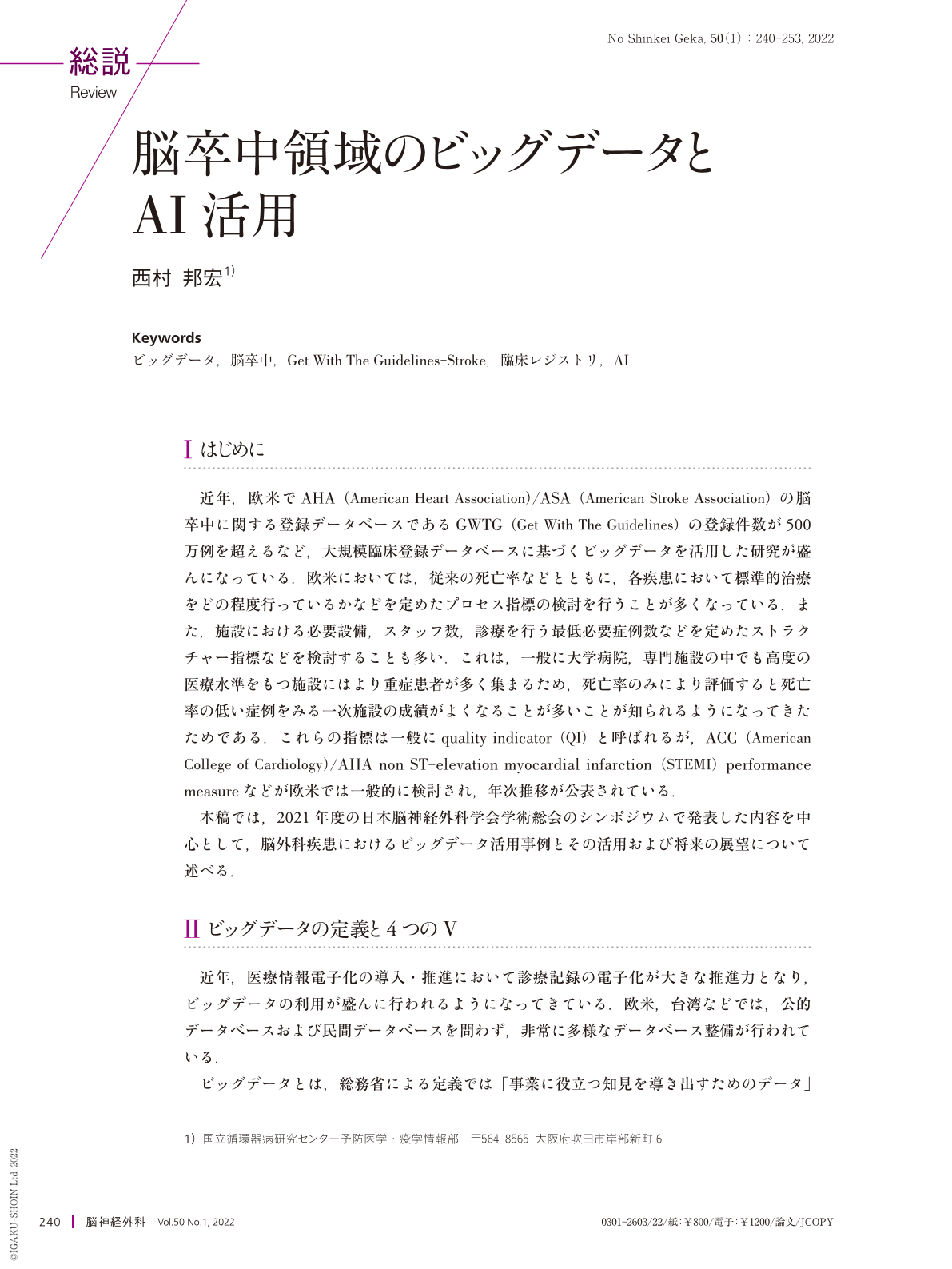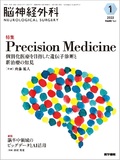Japanese
English
- 有料閲覧
- Abstract 文献概要
- 1ページ目 Look Inside
- 参考文献 Reference
Ⅰ はじめに
近年,欧米でAHA(American Heart Association)/ASA(American Stroke Association)の脳卒中に関する登録データベースであるGWTG(Get With The Guidelines)の登録件数が500万例を超えるなど,大規模臨床登録データベースに基づくビッグデータを活用した研究が盛んになっている.欧米においては,従来の死亡率などとともに,各疾患において標準的治療をどの程度行っているかなどを定めたプロセス指標の検討を行うことが多くなっている.また,施設における必要設備,スタッフ数,診療を行う最低必要症例数などを定めたストラクチャー指標などを検討することも多い.これは,一般に大学病院,専門施設の中でも高度の医療水準をもつ施設にはより重症患者が多く集まるため,死亡率のみにより評価すると死亡率の低い症例をみる一次施設の成績がよくなることが多いことが知られるようになってきたためである.これらの指標は一般にquality indicator(QI)と呼ばれるが,ACC(American College of Cardiology)/AHA non ST-elevation myocardial infarction(STEMI)performance measureなどが欧米では一般的に検討され,年次推移が公表されている.
本稿では,2021年度の日本脳神経外科学会学術総会のシンポジウムで発表した内容を中心として,脳外科疾患におけるビッグデータ活用事例とその活用および将来の展望について述べる.
In recent years, over 5 million stroke cases in the United States and Europe have been registered in the American Heart Association/American Stroke Association's Get with the Guideline Stroke database. In the United States and Europe, studies on the extent to which standard treatment is provided for each disease(process indicators)are increasingly being conducted. In this paper, we discuss examples of the use of big data in neurosurgical diseases and its application and future prospects, while focusing on the contents of the presentation conducted at the 2021 Annual Meeting of the Japanese Neurosurgical Association.

Copyright © 2022, Igaku-Shoin Ltd. All rights reserved.


